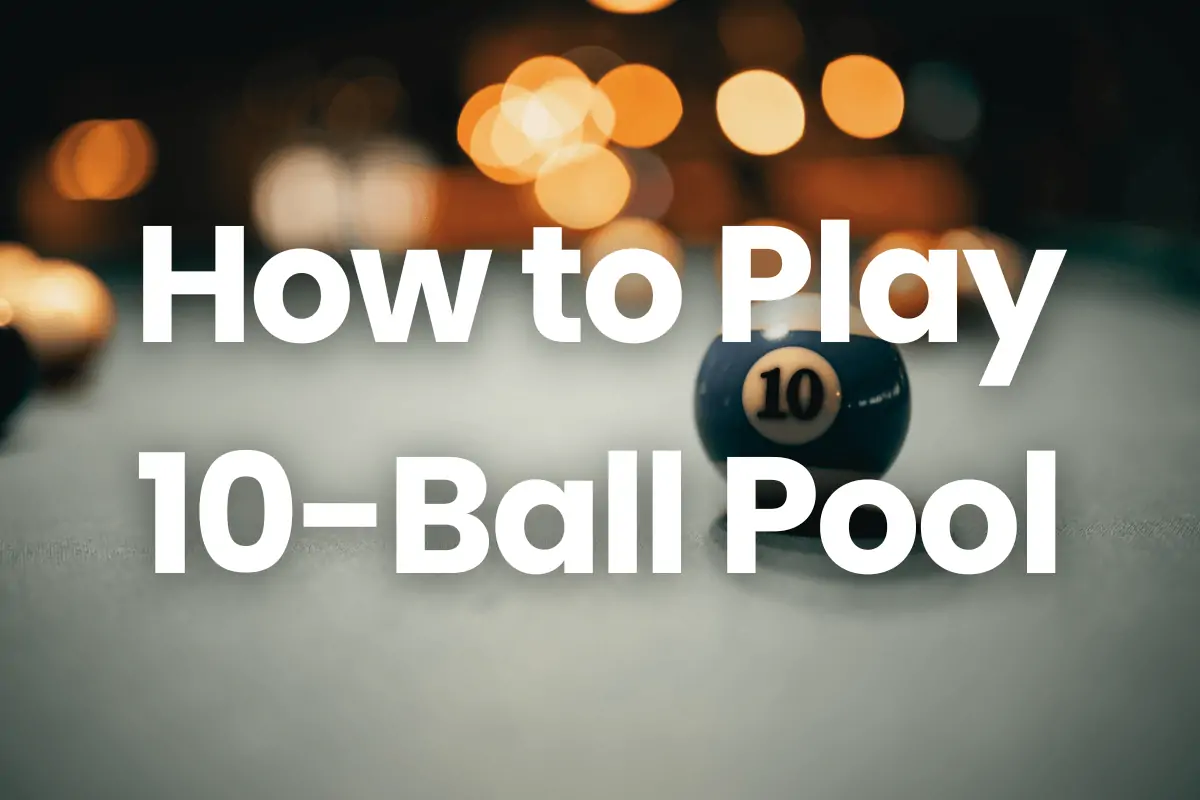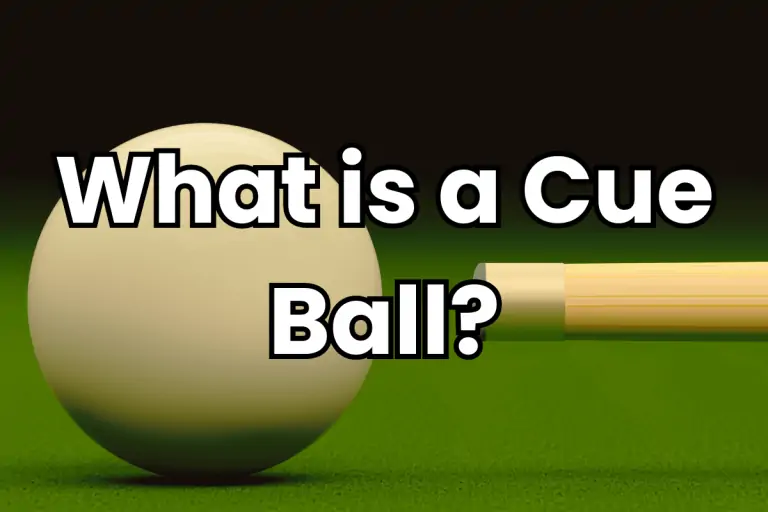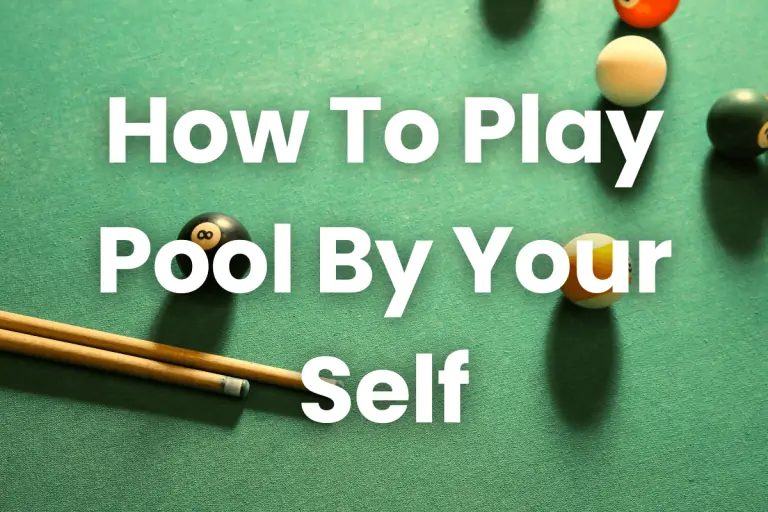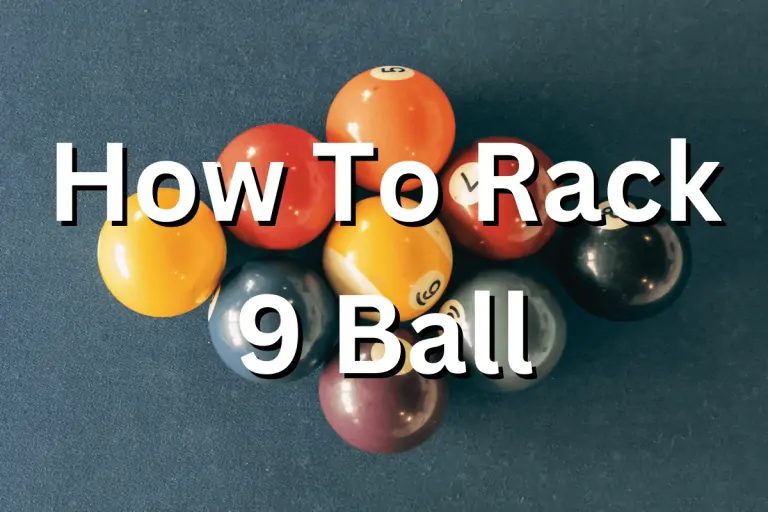How to Play 10-Ball Pool | Essential Rules & Strategies for Winning (2024)
10-ball pool, a captivating and competitive cue sport, has garnered widespread popularity among pool enthusiasts. Central to its allure is the primary rule: players must pocket balls in numerical order, culminating with the 10-ball for victory. This precision-demanding game requires strategic play and skillful execution, making it a favorite in professional and amateur circles alike. Learning how to play 10-ball pool promises not only a thrilling challenge but also an opportunity to refine one’s cue sports prowess.
What is 10-ball Pool and its History
10-ball pool is a cue sport that has evolved into a distinct and popular game in the billiards family. Its roots can be traced back to the early forms of billiards, which originated several centuries ago in Europe. Over time, billiards diversified into various games, including snooker, 8-ball, and 9-ball, each with unique rules and appeal.
The specific emergence of 10-ball pool is a more recent development, likely evolving as a variation of 9-ball pool. In 9-ball, players aim to pocket the balls in numerical order, ending with the 9-ball. 10-ball pool expanded on this concept by adding an additional ball, thus increasing the complexity and strategic depth of the game. The inclusion of the 10th ball necessitated more skill for positioning and planning, as players navigate through a larger sequence of balls.
Unlike 8-ball pool, which is divided into solids and stripes and ends with the 8-ball, both 9-ball and 10-ball pool require players to hit the balls in sequence. However, 10-ball pool typically incorporates a “call shot” rule, where players must declare their intended pocket for the ball, adding an extra layer of skill and strategy. This rule isn’t usually present in 9-ball, making 10-ball a more precise and challenging.
How To Play 10-Ball Pool: Rules and Gameplay
Objective of the Game
The primary goal in 10-ball pool is to legally pocket the 10-ball. This must be done after all the other balls, numbered 1 through 9, have been pocketed or in combination as long as the lowest-numbered ball on the table is hit first. It’s a call shot game, meaning the player must specify which ball they are aiming to pocket and in which pocket before each shot.
Set-Up
- The game is played with ten balls, numbered 1 through 10, and a cue ball.
- Balls are racked in a triangle at the foot of the table. The 1-ball is placed at the triangle’s apex on the foot spot, the 10-ball in the center of the triangle, and the other balls placed randomly within the rack.
- Players determine who breaks (starts the game) by a coin toss or similar method.
Break Shot
- The first shot of the game is the break shot. The player must hit the 1-ball first and either pocket a ball or drive at least four numbered balls to the rails for a legal break.
- If the player fails to make a legal break, it is a foul, and the opponent can choose to play from the current position or re-rack and break themselves.
Turn and Foul Rules
- Players take alternate turns. A turn continues as long as the player legally pockets a called ball or balls.
- A foul occurs if the player fails to hit the lowest-numbered ball first, doesn’t pocket a called ball, pockets the cue ball (scratch), or commits other infractions like hitting the cue ball twice or driving the cue ball off the table.
- After a foul, the incoming player gets ball in hand, meaning they can place the cue ball anywhere on the table for their next shot.
- Pocketing the 10-ball on a foul or without it being the legal ball to hit results in it being re-spotted.
Advanced Rules and Regulations in 10-Ball Pool
Nuances of “Call Shot” Rules
- In 10-ball pool, the “call shot” rule requires players to declare the ball they intend to pocket and the specific pocket for each shot. This includes calling combinations, caroms, and banks.
- If a player pockets the called ball in the called pocket, they continue their turn. However, if they pocket a different ball or the called ball in a different pocket, it’s considered a “sloppy” shot. In such cases, the incoming player can choose to take the shot or return it to the player who made the error.
- When playing a combination shot involving the 10-ball, the player must call both the ball and the pocket. If the 10-ball is pocketed out of sequence without being the called ball, it is re-spotted.
Handling Fouls and Penalties
- Fouls in 10-ball pool include failing to hit the lowest-numbered ball first, not hitting a rail with any ball after contact, a scratch, or the cue ball jumping off the table.
- After a foul, the opponent gets “ball in hand,” placing the cue ball anywhere on the table for their next shot.
- Consecutive fouls can lead to additional penalties in some rule sets. For example, three consecutive fouls by a player in one game might result in losing that game, though this rule can vary.
Specific Tournament Rules Variations
- Tournaments may enforce stricter call shot rules, where inadvertent pots lead to loss of turn, even if the intended ball is pocketed.
- Some tournaments use a “three-point break rule” to encourage more aggressive breaks. This rule states that on the break shot, at least three balls must either be pocketed or cross the head string, or a combination of both. Failure to do so is considered a foul.
- The use of jump cues, which are shorter cues for jump shots, may be restricted or allowed depending on tournament regulations.
- Time limits per shot or per rack can be imposed in professional settings to ensure the game progresses at a steady pace.
- Variations in rack setup or break rules, like alternating breaks or winner breaks, can be employed based on the tournament’s preference.
Game Strategies and Techniques in 10-Ball Pool
Offensive Strategies
Shot Selection:
Always plan several shots ahead, considering the position of the cue ball after each shot to set up for the next.
Prioritize shots that offer a high probability of success and position the cue ball advantageously for subsequent shots.
Use spin and speed control to maneuver the cue ball, creating optimal angles for pocketing and positioning.
Position Play:
Master cue ball control to ensure that you’re always in a good position to pocket the next ball.
Understand the table layout and use angles to your advantage, minimizing the distance the cue ball travels where possible.
Practice drills that focus on cue ball placement, such as stop shots, follow shots, and draw shots.
Break Strategies:
Develop a powerful and controlled break to effectively spread the balls while keeping the cue ball on the table.
Aim to pocket a ball on the break, but prioritize controlling the cue ball, ideally positioning it near the center of the table.
Experiment with different positions and speeds on the break to find the most effective strategy for your playing style.
Defensive Strategies
Safety Play:
When a direct shot is not feasible, play a safety by positioning the cue ball or object balls in a manner that makes it difficult for your opponent to make a legal shot.
Use blockers by placing the cue ball behind other balls, limiting your opponent’s shot options.
Consider distance safeties, where the cue ball and object ball are placed as far apart as possible to increase the difficulty of the opponent’s shot.
Psychological Tactics:
Maintain a calm and composed demeanor, regardless of the state of the game. This can unnerve your opponent and give you a psychological edge.
Use deliberate pacing to control the rhythm of the game. Slowing down can disrupt an opponent’s momentum while speeding up can apply pressure.
Be mindful of body language and avoid showing frustration or confidence, keeping your opponent uncertain of your mental state.
Common Mistakes in 10-Ball Pool and How to Avoid Them
Identification of Frequent Errors
Poor Shot Selection: Beginners often choose difficult shots over simpler, more strategic options. This can lead to missing shots and losing control of the table.
Inadequate Position Play: Intermediate players sometimes focus more on pocketing balls than on positioning the cue ball for the next shot, leading to tougher subsequent shots.
Faulty Cue Ball Control: Over or under-hitting the cue ball is common, resulting in lost opportunities and giving the advantage to the opponent.
Neglecting Safety Play: Beginners and intermediates frequently overlook the importance of playing defensive shots, especially when no offensive shots are available.
Inconsistent Break: Inconsistent or weak breaks can fail to effectively disperse the balls, making the game more challenging.
Mental Game Weaknesses: Allowing frustration or anxiety to affect decision-making is a common pitfall for players at all levels.
Tips and Exercises to Improve Accuracy and Strategy
Practice Shot Selection:
- Set up scenarios on the table and practice choosing and executing the most strategic shots.
- Play practice games where your focus is not on winning, but on selecting the best shots.
Enhance Position Play:
- Drill exercises focus on cue ball control, like stop shots, follow-through shots, and draw shots.
- Play “ghost ball” where you aim to run the table in a predetermined order, focusing on cue ball placement.
Improve Cue Ball Control:
- Work on drills that require precise speed control, like lining up balls along the length of the table and trying to stop the cue ball close to each ball.
Safety Play Training:
- Set up and practice common safety scenarios.
- Play games where the objective is to execute successful safety shots.
Refine the Break:
- Practice breaking from different positions to find the most effective spot.
- Use a consistent pre-shot routine for breaks to develop consistency.
Strengthen the Mental Game:
- Engage in exercises that promote focus and calm, such as meditation or visualization techniques.
- Develop a routine between shots to reset and focus, regardless of the previous shot’s outcome.
Conclusion
To excel in 10-ball pool, it’s important to learn the rules, practice your shooting and strategy, and control the cue ball well. Avoid common mistakes by practicing regularly and staying focused. Joining the pool community can also help you improve and make the game more fun. Remember, the more you practice and connect with other players, the better you’ll get at this enjoyable and challenging game.
FAQs
What is the main difference between 10-ball and 9-ball pool?
The main difference is in the number of balls used and the game’s objective. In 10-ball pool, players must pocket balls in numerical order, culminating with the 10-ball, while in 9-ball, the game ends with the 9-ball. Additionally, 10-ball typically requires players to call their shots, making it more challenging.
How do you rack the balls in 10-ball pool?
The balls in 10-ball pool are racked in a triangle formation at the foot of the table. The 1-ball is placed at the apex on the foot spot, the 10-ball in the center of the triangle, and the other balls are arranged randomly.
Is it a foul if you accidentally pocket the wrong ball in 10-ball pool?
In 10-ball pool, if you pocket a ball that you did not call, or if you pocket the called ball in a different pocket, it’s not a foul, but your turn ends. The next player can choose to play from the current position or pass the turn back.
Can you win with a combination shot on the 10-ball?
Yes, you can win by pocketing the 10-ball on a combination shot, as long as you hit the lowest-numbered ball first on the table and call the shot correctly.







